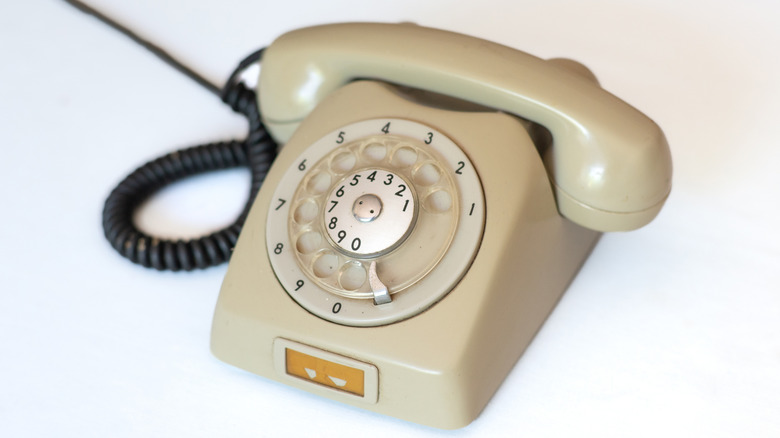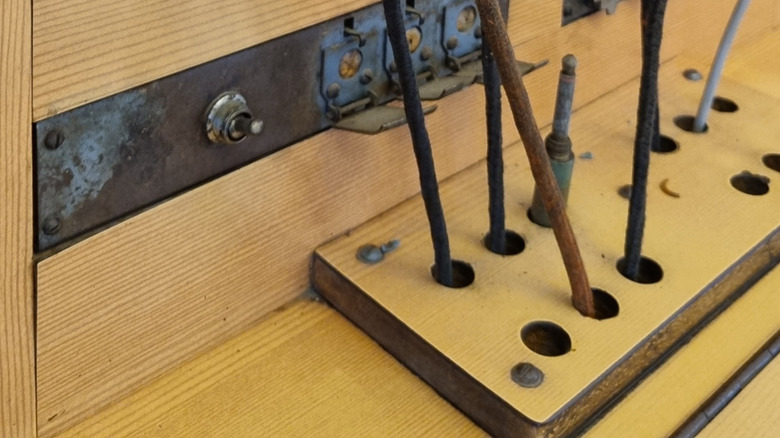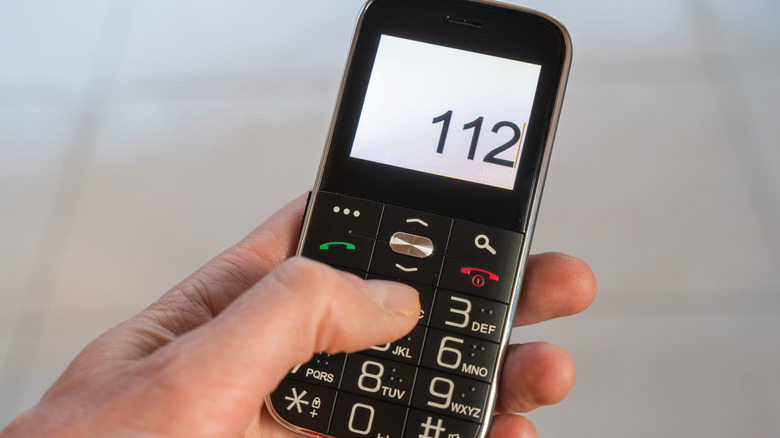Why Did Old Phone Numbers Have Letters In Them?
In this day and age, phones have undeniably become the main method of communication. It seems like everyone has a cell phone in their pocket, making them capable of chatting with others over social media, messaging apps, email, and, of course, the tried and true texting and calling. These days, it's not too difficult to find your phone number, nor is it hard to remember. After all, for the most part, the phone numbers you'll encounter throughout your day-to-day life consist of an area code, three digits, and then four digits with rare variation. However, this wasn't always the case.
Way back in the day, phone numbers didn't consist solely of numbers. They actually had two or three letters at the beginning, which, in today's world, seems like an odd detail. In the context of the early to mid-20th century, though, this made a lot of sense. These letters indicated the telephone exchange — a central hub where all calls in a given area were sent through — that serviced the specific phone number. An exchange was where operators worked at their switchboards, physically connecting calls across different locations. By the end of the 1970s, though, telephone exchanges and their operators were phased out thanks to automation, with letters in phone numbers being dropped around the same time.
It's weird to think there was a time not too long ago when phone numbers came with letters. What's more, way back when, phone numbers didn't contain seven numbers, either.
Along with letters, old phone numbers contained fewer digits
As if letters being present in phone numbers isn't strange enough, there's also the matter of the number of digits to look back on. Nowadays, phone numbers are typically seven digits long, along with a three-digit area code. However, they were drastically shorter in the late 19th century, when telephone communication was in its infancy in the late 19th century. The numbered sections were only two or three digits, along with another two or three letters to indicate the telephone exchange. Come the start of the 1920s, though, this would change, and four digits became the standard. Phone numbers that hadn't already adopted this format would add zeroes to fill in the blanks.
Naturally, more changes came along. As mentioned, telephone exchanges were eventually retired, so there was no longer a use for the two or three-letter prefix in phone numbers. Therefore, the decision was made to convert the letters into numbers, dividing the alphabet between the numbers one through nine. In the modern era, the set of three letters after the area code still denotes the geographic location of the specific phone line, while the four numbers after it remain the unique signifier of the line in question.
Even with the streamlining of phone numbers and the removal of letters, the connection between numbers and letters remains. Of course, it's not as widespread or integral to communication as it once was.
How letters are used in phones and phone numbers today
At this point, decades have passed since letters were removed from phone numbers, and switchboards have become relics of a bygone age. Be that as it may, the remnants of this old system haven't gone away, though they exist on a much smaller scale. For example, many now-dated cell phones — including some downright bizarre yet forgotten phones from the 2000s — with physical keyboards divide the alphabet among the first nine numbers. This format carries over from old rotary phones from the letter prefix era, which presented numbers alongside their paired letters. Still, this is now for typing and texting rather than calling, so how are letters used for calls today?
For the most part, letters and their matching numbers are used for advertising purposes these days. It's not uncommon to see a commercial on TV for a business or service that uses the letters attached to segments of their phone numbers to spell out phrases. One example is the junk removal service, 1-800-GOT-JUNK, which can be reached at 1-800-468-5865. The 468-5865 spells out GOT-JUNK when the numbers are matched to their designated letters. It's a catchy way of advertising a business, and it makes typing out these phone numbers easy for those well-acquainted with phone digits and their corresponding letters.
Long before cell phones underwent their stunning transformation, phone numbers went through quite a metamorphosis of their own. It'll be interesting to see how, if at all, they evolve in the coming decades, and if letters will have anything to do with it.


